Financial aid advising is an essential component of Prison Education Programs (PEPs). Many PEPs rely on the paper FAFSA when serving students who are incarcerated. During this webinar, we will walk through the FAFSA completion process with both financial aid administrators and prison program administrators, highlighting the form's questions that are more complex to address. We will also talk about the methods for processing paper FAFSAs. Both financial aid teams and prison program administrators will join the conversation and welcome your questions.
Federal Student Aid is sending a letter to correctional facilities. It asks for their help in assisting incarcerated borrowers. The letter focuses on reducing the barriers to communication and information.
In an effort to make visible the national landscape of access to educational technology in prison education programs, Ithaka S+R launched a first-of-its-kind national survey in the fall of 2022, with grant funding support from Ascendium Education Group. The survey asked respondents about student access to technology in their higher education in prison program, collecting demographic information before focusing on four thematic areas: technological devices, learning management systems and software, network connection and internet access, and future technology plans.
Federal Student Aid published a new factsheet with instructions on how incarcerated borrowers can get out of default through the Fresh Start initiative. It also briefly addresses other relief options, including contact information for the office that handles complaints - the Office of the Student Loan Ombudsman.
The first webinar in the Pipeline to Pell series will be held on Thursday, November 2nd at 11:00 am ET. The webinar will focus on the FAFSA Simplification Act, Pell Grants and Prison Education Programs.
A compiled list of terms that replace oppressive institutional terminology with empowering and uplifting language.
This discussion guide is a useful tool for facilitators leading thoughtful conversations about the content in the report, and for note takers seeking to capture important ideas and action items. You’ll find questions, materials and guidelines as well as instructions and tips for both facilitators and note takers. The purpose of the discussion guide is to: create a dialogue among people who care about improving equity, access and excellence in higher education in prison programs. Staff and program administrators can use this discussion guide to:
In December 2017, Lumina Foundation provided support to the Prison University Project (PUP) and the Alliance for Higher Education in Prison (the Alliance) to reflect upon and document the key characteristics of high-quality prison higher education programs, and to inform other stakeholders in the field, including new and experienced practitioners seeking to achieve equity and excellence in their work, policy leaders, philanthropy, and others.
Equity and Excellence in Practice: A Guide for Higher Education in Prison provides a clear and specific summary of what the authors believe are the most essential components of high quality in-prison higher education programs that uphold a commitment to equity, excellence and access.
This brief report outlines the potential impacts of Pell restoration on the field of higher education in prison. Using original qualitative data from interviews with 12 higher education in prison programs and quantitative data from a national survey of college programs in prison, our analysis focuses on persistent funding challenges that the Pell grant alone cannot address. Specifically, we highlight three distinct and pressing challenges for the field of higher education in light of Pell restoration, and related to: 1.



